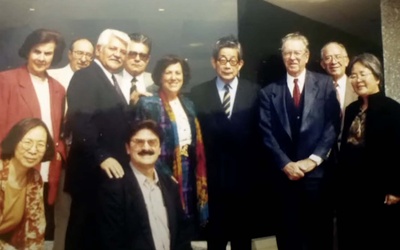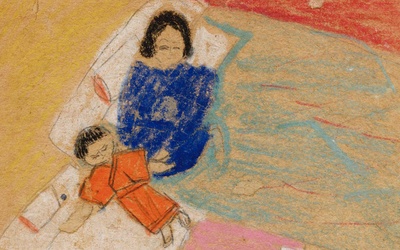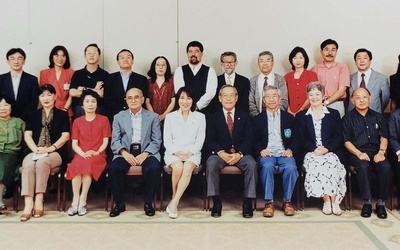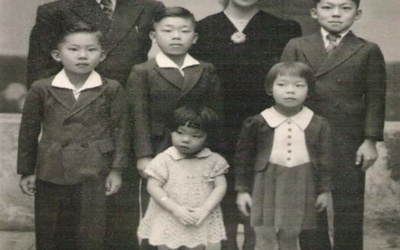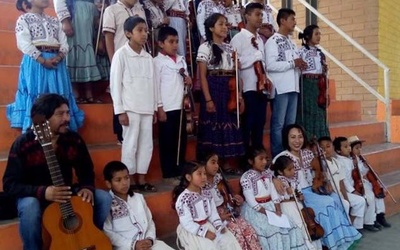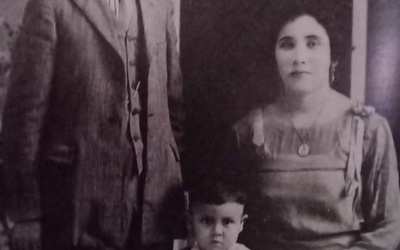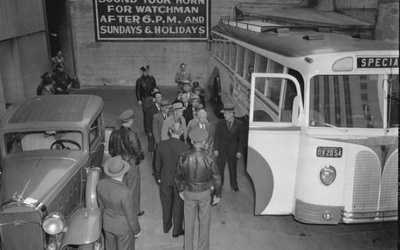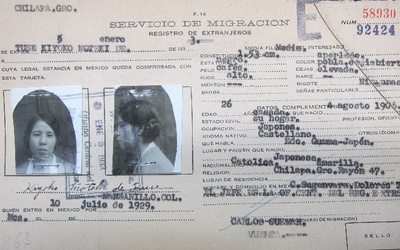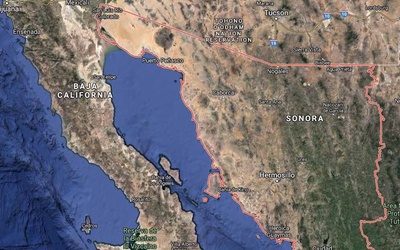
セルヒオ・エルナンデス・ガリンド氏は、コレヒオ・デ・メヒコで日本研究を専攻し、卒業した。メキシコやラテンアメリカ諸国への日本人移住について多くの記事や書籍を刊行している。
最近の刊行物としてLos que vinieron de Nagano. Una migración japonesa a México [長野県からやってきた、メキシコへの日本人移住] (2015)がある。この本には、戦前・戦後メキシコに移住した長野県出身者のことが記述されている。また、La guerra contra los japoneses en México. Kiso Tsuru y Masao Imuro, migrantes vigilados(メキシコの日本人に対する戦争。都留きそと飯室まさおは、監視対象の移住者) という作品では、1941年の真珠湾攻撃による日本とアメリカとの戦争中、日系社会がどのような状況にあったかを描いている。
自身の研究について、イタリア、チリ、ペルー及びアルゼンチンの大学で講演し、日本では神奈川県の外国人専門家のメンバーとして、または日本財団の奨学生として横浜国立大学に留学した。現在、メキシコの国立文化人類学・歴史学研究所の歴史研究部の教育兼研究者である。
(2016年4月更新)
この執筆者によるストーリー
田中道子 — パート 2: エル・コレヒオ・デ・メキシコの教師としての50年
2023年8月4日 • セルヒオ・エルナンデス・ガリンド
パート 1 を読む >>ソビエト連邦での学部研究を終えると、ミチコとアメリコは当面の将来を決定する必要がありました。すでに娘の恵美子さんが生まれており、安定した仕事を見つける必要があった。美智子さんはメキシコに行くのが嫌いではありませんでした。なぜなら、彼女は一緒に住んでいた多くのメキシコ人学生のグループに会い、良い友情を築いていたからです。このジレンマに直面して、彼らは、アメリコが日本よりも簡単に仕事を見つけることができ、メキシコの大学で歴史の勉強を進めること…
田中道子 — パート 1: 九州の山中の避難所からエル・コレヒオ・デ・メキシコまで
2023年8月3日 • セルヒオ・エルナンデス・ガリンド
田中道子は太平洋戦争のさなか、1943年4月に東京で生まれました。この年、北米海軍はすでにミッドウェー海戦に勝利して攻勢を開始し、南太平洋のガダルカナル島から日本軍を駆逐することに成功していた。その瞬間から、北米軍の進撃は 1945 年 8 月に彼らが勝利を収めて東京湾に入るまで止めることができなくなりました。日本国民は、まだ軍事的な戦闘には程遠いとはいえ、努力と犠牲を払って戦争を支え、日を追うごとに物質的資源を消費し、増大する日本帝国の巨大な軍事機構を維持し続けた。その人…
マリア・エレナ・オタ・三島:強制集中からエル・コレヒオ・デ・メキシコまで
2023年5月5日 • セルヒオ・エルナンデス・ガリンド
マリア・エレナ・オタ・ミシマは、メキシコにおける最も重要な日本人移民研究者でした。著書『 メキシコに移住した7人の日本人』 1890-1978 」 1 は、日本人移民がその国に到着して定住するまでに長い行軍を必要としたことを明らかにしました。この研究はまた、移住者として、契約に基づいて、自由に、専門家として、または既にメキシコに滞在していた同胞の客人としてメキシコに入国した方法に従って移民を分類することにより、移民研究に方法論的な貢献を果たした。太田氏の研究では、移民が来た…
カタセ=タナカ一家:戦時中の強制収容、そしてソノラへの帰還
2023年2月1日 • セルヒオ・エルナンデス・ガリンド
1942年の初め、アメリカ大陸のさまざまな国に住む移民コミュニティにとっての悲劇の日々が始まった。1941年12月の日本海軍による真珠湾海軍基地への攻撃が、日米間の戦争だけでなく、アメリカ大陸全体に住む移民とその家族の監禁や迫害につながっていったからだ。 アメリカ政府は、40年以上も前からアメリカやメキシコへ移住し形成された日系コミュニティを、大日本帝国軍が計画していた大陸侵略の一環とみなした。こういった反日パラノイアは後に北米の司法制度によって正式に認められ、アメリカ政…
メキシコへの最初の日本人移民から 125 年: メキシコと日本の関係の魂 - パート 3
2022年10月13日 • セルヒオ・エルナンデス・ガリンド
パート 2 を読む >>グローバル化段階にある日本人コミュニティ20 世紀の最後の 3 分の 1 に始まり、現在の最初の 20 年間に始まった移民の波は、一方では経済分野、他方では教育分野における激しい交流によって促進されました。すでに指摘したように、この時期の移民の流れの大きな原動力となったのは日本の投資であった。この分野では、日本の文化産業がテレビ番組や漫画(現在のブームではアニメ、アニメとして知られるようになりました)を通じて海外に強く進出し始めたことを括…
メキシコへの最初の日本人移民から 125 年: メキシコと日本の関係の魂 - パート 2
2022年10月6日 • セルヒオ・エルナンデス・ガリンド
パート 1 を読む >>終戦から1977年の日系メキシコ高等学校設立まで1942年に断絶していたメキシコと日本の関係が1952年に再開されたことにより、日本からの新たな移民の波が可能となった。メキシコで生まれ、戦争中に日本に閉じ込められていた移民の子供たちが戻ってきただけでなく、祖国のほぼ完全な破壊に直面してより良い未来を求めて家族や友人に誘われた新たな移民も戻ってきた。 。この新しい移民の波は、熟練した労働者、技術者、専門家、芸術家、学生で構成されていたため、…
メキシコへの最初の日本人移民から 125 年: メキシコと日本の関係の魂 - パート 1
2022年9月29日 • セルヒオ・エルナンデス・ガリンド
1897年の開業から太平洋戦争まで1888 年にメキシコと日本の外交関係が開設されたことにより、1897 年から日本人労働者の第一波がメキシコに到着することが可能になりました。最初の 34 人の移民がコーヒー農園を建設するためにチアパス州に到着して以来、この 125 年間を通じて、この道はの移住は多大な困難によって切り開かれてきました。 5 世代、6 世代に達する移民の歴史を短い記事に集中させることは不可能なので、この長い旅を説明することを可能にする彼らのうちの何人かの話を…
モリタタケシ:北米の強制収容所に収容されたメキシコ人漁師
2022年1月21日 • セルヒオ・エルナンデス・ガリンド , キヨコ・ニシカワ・アセベス
1941 年 12 月 7 日、ハワイを拠点とする北米艦隊に対する日本軍の攻撃により、両国間の戦争が始まりました。太平洋のこちら側、大陸全体において、この日はまた、さまざまな国に定住した数十万人の日本移民に対する特異な戦争の始まりでもあり、彼らは即座に「外敵」として非難された。その運命の日の前夜、米国では日系アメリカ人がクリスマスと大晦日のお祝いの準備をしていました。これらの移民コミュニティは、北米の経済と文化にしっかりと統合されました。それにもかかわらず、その日曜日の午後…
フアン・ギレルモ・ヒューズ氏: メキシコにおける日本人の不当な集中の一例
2021年9月29日 • セルヒオ・エルナンデス・ガリンド , アラセリ・ウェンセス・ランヘル
20世紀前半にメキシコに移住した多くの日本人は、この国に定住することを決意しただけでなく、メキシコ国籍も取得しました。フアン・ギレルモ・布施も「メキシコを祖国」と考え、生まれた同じ町の群馬県出身の妻清子を連れて来た一人で、彼女との間には3人のメキシコ人の娘がいた。 1941年12月に日米戦争が始まると、日本移民だけでなく、すでにメキシコ人だった国民に対しても迫害が始まった。このようにして、米国が「日本人の血」を持つ者を「敵」とみなしたことで、太平洋戦争は人種的な側面を帯び…
ルネ・タナカ - パート 2: ウレスのメキシコシティへの移籍
2021年7月14日 • セルヒオ・エルナンデス・ガリンド
パート 1 を読む >>メキシコ当局は、集中して厳重に監視されることを目的として、日系人家族全員にグアダラハラとメキシコの都市に直ちに移動するよう命じた。なぜ家を出て、学校を放棄し、友人たちから離れなければならないのか理解できないまま、ルネは 1942 年 1 月初めに両親に付き添われてグアダラハラに向かった。ルネ・タナカにとっての集中命令は居住地の変更だけではない。その年の最初の数か月間、グアダラハラ市、そしてその後現在まで彼が住んでいるメキシコシティで過ごし…

